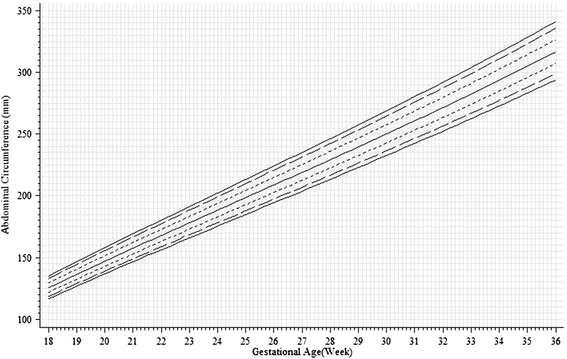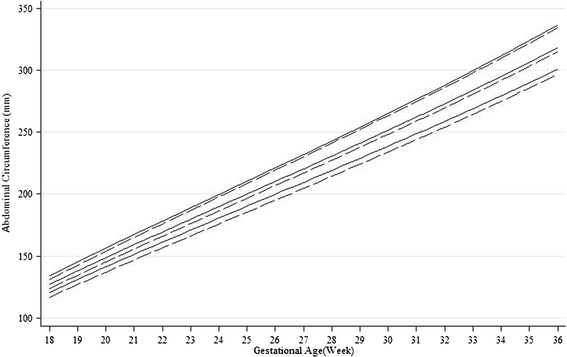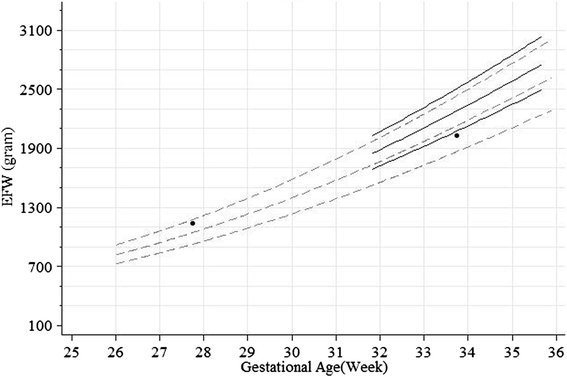Unconditional and conditional standards for fetal abdominal circumference and estimated fetal weight in an ethnic Chinese population: a birth cohort study
- PMID: 26108619
- PMCID: PMC4480986
- DOI: 10.1186/s12884-015-0569-1
Unconditional and conditional standards for fetal abdominal circumference and estimated fetal weight in an ethnic Chinese population: a birth cohort study
Abstract
Background: Diagnosis of intrauterine fetal growth restriction and prediction of small-for-gestation age are often based on fetal abdominal circumference or estimated fetal weight (EFW). The present study aims to create unconditional (cross-sectional) and conditional (longitudinal) standards of fetal abdominal circumference and EFW for use in an ethnic Chinese population.
Methods: In the Growing Up in Singapore Towards healthy Outcome (GUSTO) birth cohort study in Singapore, fetal biometric measurements were obtained at enrolment to antenatal care (11-12 weeks) and up to three more time points during pregnancy. Singleton pregnancies with a healthy profile defined by maternal, pregnancy and fetal characteristics and birth outcomes were selected for this analysis. The Hadlock algorithm was used to calculate EFW. Mixed effects model was used to establish unconditional and conditional standards in z-scores and percentiles for both genders pooled and for each gender separately.
Results: A total of 313 women were included, of whom 294 had 3 and 19 had 2 ultrasound scans other than the gestational age dating scan. Fetal abdominal circumference showed a roughly linear trajectory from 18 to 36 weeks of gestation, while EFW showed an accelerating trajectory. Gender differences were more pronounced in the 10(th) percentile than the 50(th) or 90(th) percentiles. As compared to other published charts, this population showed growth trajectories that started low but caught up at later gestations.
Conclusions: Unconditional and conditional standards for monitoring fetal size and fetal growth in terms of abdominal circumference and EFW are available for this ethnic-Chinese population. Electronic spreadsheets are provided for their implementation.
Figures





References
-
- Barker DJP. Mothers, Babies and Health in Later Life. 2. Edinburgh: Churchill Livingstone; 1998.
-
- Kramer MS. The epidemiology of adverse pregnancy outcomes: an overview. J Nutr. 2003;133(5 Suppl 2):1592S–6. - PubMed
-
- Seravalli V, Block-Abraham DM, Turan OM, Doyle LE, Blitzer MG, Baschat AA. Second trimester prediction of delivery of a small-for-gestational-age neonate: integrating sequential Doppler information, fetal biometry, and maternal characteristics. Prenat Diagn. 2014 May 24. doi: 10.1002/pd.4418. [Epub ahead of print]. - PubMed
Publication types
MeSH terms
LinkOut - more resources
Full Text Sources
Other Literature Sources
Medical
Research Materials

